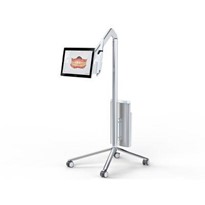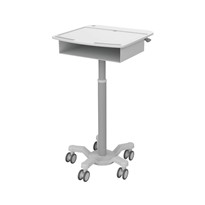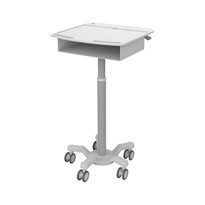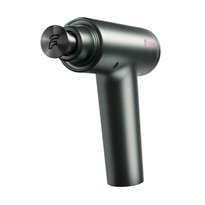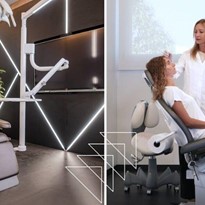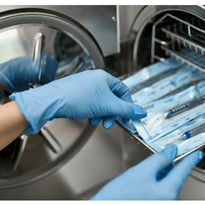High Quality and Precision
No two dental cases are the same. Patient anatomy is unique, and each treatment is tailored, enabled by a long history of custom, human-centric craftsmanship. But, as with any trade, quality is dependent on the skills of a given dentist, orthodontist, assistant, or technician, and achieving consistent, high-quality, affordable dental products with so many potential sources of error is incredibly difficult.
Digital dentistry reduces the number of steps and, therefore, the risks and uncertainties introduced by human factors, providing higher consistency, accuracy, efficiency, and precision at every stage of the workflow. 3D intraoral scanning removes many of the variables associated with taking a traditional impression, giving dental technicians more accurate data to design from.
Dental and orthodontic CAD software tools provide visual interfaces similar to traditional workflows, with the added benefit of being able to automate certain steps, as well as easily identify and fix mistakes.
Digital manufacturing equipment such as 3D printers or milling machines deliver a range of high-quality custom products, prosthetics, and appliances with superior fit and repeatable results for fewer errors, lower costs, and increased clinical performance.
Improved Efficiency: Time and Cost Savings
Digital dentistry improves the efficiency of procedures and streamlines workflows in dental and orthodontic practices, and dental labs alike.
Dental or Orthodontic Practice
In a dental or orthodontic practice, saving time on menial tasks means shorter appointments, increased throughput, and patient satisfaction. Taking impressions with 3D intraoral scanners is easy, reducing chair time and labor. Digital impressions cut out the cost of materials and the time required to ship impressions to a laboratory. Instant feedback and the elimination of manual errors like voids, bubbles, or tears reduce the need to duplicate impressions.
Digital design and manufacturing increase productivity, reducing hands-on work for streamlined production, fewer remakes, and less time per part. Dental and orthodontic CAD software tools are incredibly powerful and application-specific, enabling dental professionals to plan and design a variety of orthodontic or restorative appliances.
In many countries, dentists and orthodontists are required to store patients’ physical models and records for years. This often requires renting space or dedicating a significant part of the office for storage. With digital impressions, patient anatomy can be saved in the cloud or on a local server, requiring significantly less space and making searching for records easier. Additionally, patient models can be rapidly produced from these digital impressions on-demand with desktop 3D printers.
Dental practices can save time and costs by bringing production in-house for indications including:
- Diagnostic models
- Models for thermoformed appliances
- Surgical guides
- Occlusal splints, mouthguards, and night guards
- Temporary restorations
- Permanent restorations
- Temporary full-arch implant-supported appliances (All-on-X)
Better Patient Experience and Outcomes
One of the most significant benefits of digital technologies is improved patient experience and comfort. A satisfied patient is more likely to follow treatment plans, return to a clinic, and recommend it to others, contributing to the long-term success of a practice.
Digital technologies improve the workflow from diagnosis to planning to treatment. Intraoral scanning is faster and substantially more comfortable than regular impressions, while Cone Beam Computed Tomography (CBCT) scanning adds a new dataset to assist in planning for implant surgery or further diagnosis in orthodontic treatments. Virtual treatment planning and appliance design enable less invasive treatments and better-fitting prosthetics. Digital tools also simplify communication between the dentist and patient, and the practice and lab, allowing for immediate data transmission and worldwide reachability.
3D printers can create temporary or permanent prosthetics chairside, so there’s no need to wait when presented with an urgent case. If replacement aligners or occlusal splints are needed, patients can quickly be presented with the appliances they need, removing potential gaps in treatment plans. Same-day and chairside delivery of appliances became possible thanks to digital production methods and technical developments. As a result, digital dentistry makes for reduced chair time, faster treatments, and higher acceptance rates, all with scientifically proven, superior clinical outcomes.
read more:
https://dental.formlabs.com/blog/moving-from-analog-to-digital-workflows-in-dentistry/







-205x205.jpg)

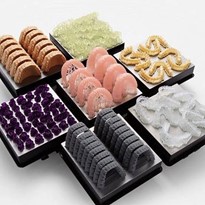
-205x205.jpg)
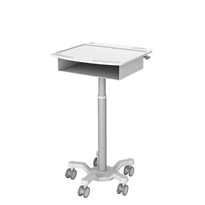
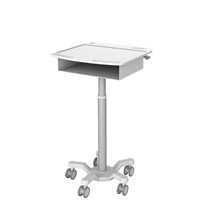
-205x205.jpg)


-205x205.jpg)
